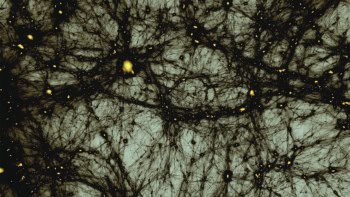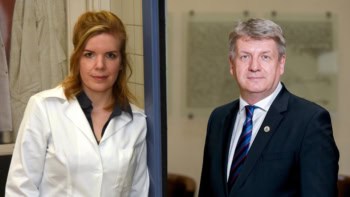Thomas Gold, the controversial US-based astronomer and geoscientist, died yesterday in Ithaca, New York, at the age of 84. Gold is best known for developing, along with Hermann Bondi and the late Fred Hoyle, the steady-state theory of the universe. It assumes that we live in a world that has no beginning or end, in which matter is constantly being created. Although the theory is widely viewed to be incorrect -- with the big-bang theory now holding sway -- many of his other unconventional ideas have stood the test of time.
Gold, Hoyle and Bondi revealed their steady-state theory of the universe in two separate papers in the Monthly Notices of the Royal Astronomical Society in 1948. The trio had developed the theory because they could not believe that all the matter in the universe was created at the initial singularity (the big bang). But to account for the fact that the universe is continually expanding, the theory requires that matter is continually created at the rate of a few hydrogen atoms per cubic metre per billion years. The theory initially seemed plausible, but the discovery of the cosmic microwave background in 1965 dealt it its first big blow.
Gold again sparked controversy in 1955 when he suggested that the Moon’s surface is covered with a fine rock powder. It was not until 1969 that he was vindicated when the Apollo 11 crew brought the first samples of lunar soil back to Earth. Analyses revealed that it is indeed powdery, with each grain covered in a thin metal coating caused by the penetration of the solar wind. Gold also designed the stereo camera that was carried on the lunar surface by the US astronauts.
Another of Gold’s ideas that is widely believed to be correct is his theory of pulsars — astronomical objects that produce regular pulses of radio waves. In 1967 he argued that pulsars are neutron stars that emit the waves as they spin. His view was initially considered so implausible that he was not even allowed to defend it at a conference. However, the discovery of a pulsar in the Crab Nebula later led to the theory being accepted.
Gold got his first taste of controversy while a graduate student at Cambridge in 1946 when he spotted a flaw with the classical theory of hearing that had been developed by the German physicist Hermann von Helmoltz in the mid-19th century. It assumed that the inner ear consists of a set of “strings”, each of which vibrates at a different frequency. Gold, however, realised that friction would prevent resonance from building up and that some active process is needed to counteract the friction. He proposed that the ear operates instead like a “regenerative” radio receiver — adding energy at the very frequency it is trying to detect. Ignored for over 30 years, his research was rediscovered in the 1970s when physiologists discovered the tiny hair cells that act as amplifiers in the inner ear.
His most recent far-out idea, which he discussed in his 1998 book The Deep Hot Biosphere, was that oil and coal are not remnants of ancient surface life that became buried and subjected to very high temperatures and pressures. Gold instead argued that these deposits are produced from primordial hydrocarbons dating back to when the Earth was formed. He claimed that volatile gases then migrate towards the surface through cracks in the crust, and either leak into the atmosphere as methane, become trapped in sub-surface gas fields, or lose their hydrogen to become oil, tar or coal. In other words, there must be reserves of fuel vastly in excess of the quantities that the gas and petroleum industry estimates.
Born in Vienna in 1920, Gold attended secondary school in Switzerland, before going to Cambridge University shortly before the Second World War. Although held in a British internment camp as a suspected enemy alien for a year, Gold later helped to develop radar for the British Admiralty. He then moved to Harvard University in the US, before being recruited by Cornell University in 1959, where he chaired the astronomy department and was director of the Center for Radiophysics and Space Research. Gold retired in 1987 but continued to carry out research.
Gold received many honours in his lifetime, having been made a fellow of the Royal Society and elected to the US National Academy of Sciences. He also served on the President’s Science Advisory Committee.



